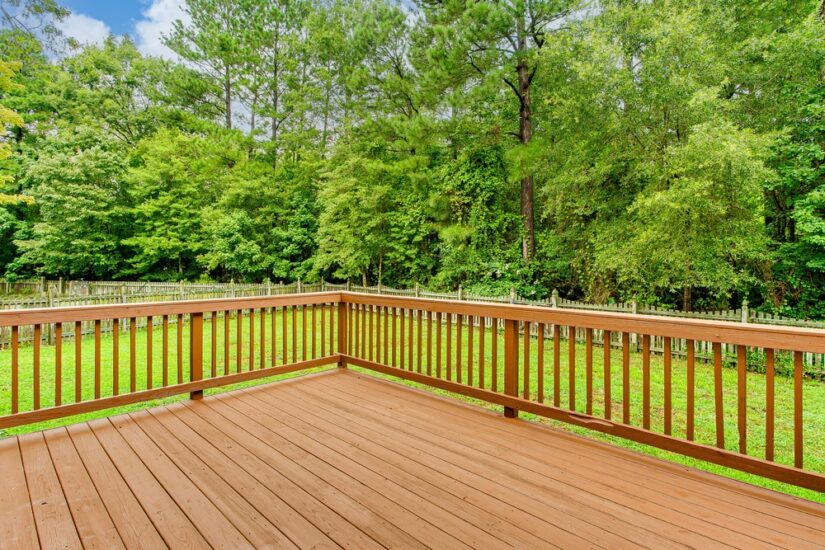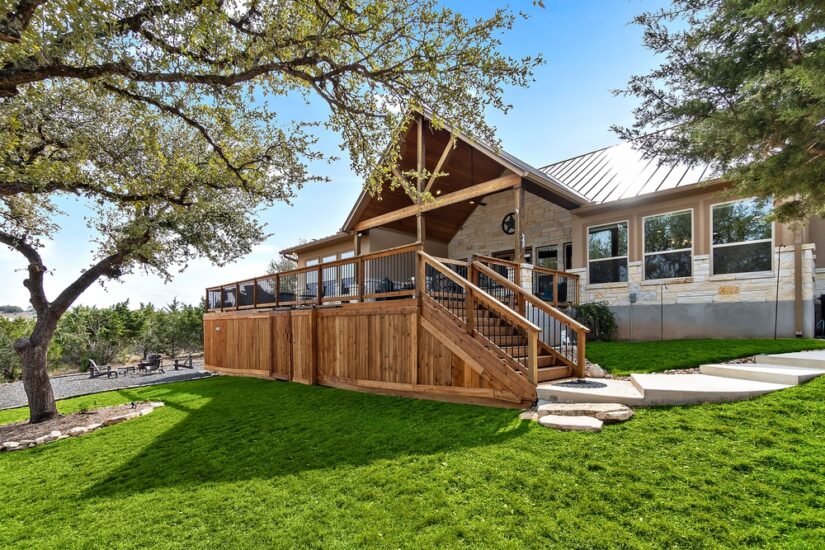
A wobbly deck railing usually means the posts or connections securing it have loosened over time, often due to wear, weather, or improper installation. The most common cause is weakened or damaged post anchors and fasteners that no longer hold the railing firmly in place.
You might also have underlying issues like wood rot, damaged framing, or insufficient support if the railing feels unstable. Addressing these problems early is important because a loose railing can become a safety hazard and potentially lead to injury.
Key Causes of a Wobbly Deck Railing
Loose Screws and Hardware
The most common reason for a wobbly railing is loose screws, bolts, or other fasteners. Over time, vibrations from wind or normal use cause these components to loosen. When connections weaken, the railing loses its stability and can shift with even light pressure.
Check all attachment points, including where posts meet the deck frame and where rails connect to posts. Screws that have stripped or fallen out should be replaced with properly sized, corrosion-resistant hardware. Using longer screws or lag bolts can improve grip if holes have widened.
Tightening the hardware regularly is crucial. Thread-locking compounds or washers might also help prevent future loosening. Without solid hardware connections, your railing will remain unsafe.
Rotten Wood Components
Wood railings exposed to moisture can develop rot, which compromises their strength. Rotten posts, rails, or base plates lose structural integrity, causing the entire railing to wobble or even fail.
Inspect your wood carefully for signs like softness, discoloration, or crumbling at the base of posts and areas where the railing connects. Rotten spots may not be immediately visible, so probing suspect areas with a screwdriver or awl can reveal hidden decay.
Affected wood components need replacement to restore stability. Simply tightening fasteners won’t fix rot-related wobble. Using pressure-treated lumber or rot-resistant wood like cedar reduces this risk. Regular sealing or staining also protects wood from moisture damage.
Improper Installation
If your railing wasn’t installed with the correct hardware or was built without firm attachment points, wobbling is likely. Posts need to be anchored securely to the deck framing or surface, not just set on top or nailed lightly.
Failure to use approved fasteners or inadequate post spacing can weaken the structure. Posts spaced too far apart leave the rails unsupported, increasing sway. The railing should meet local building codes for safety and stability.
Checking the alignment and attachment methods can reveal installation flaws. Reinstalling or reinforcing posts often involves adding blocking or mounting brackets and replacing weak fasteners. Correct installation provides the mechanical support needed for a stable railing.
Effects of Weather and Moisture
Environmental factors like rain, snow, and seasonal humidity changes affect deck railings, particularly wood ones. Repeated cycles of wetting and drying cause wood to expand, contract, and eventually degrade.
Moisture can penetrate joints and fastener holes, accelerating wood rot and loosening hardware as metal corrodes. This combination weakens connections and leads to the railing wobbling.
Exposure to intense sunlight can also dry out and crack wood, making it brittle. Applying water-repellent sealers and maintaining finishes can slow moisture damage. Proper drainage around posts and railings helps reduce water exposure and prolongs the life of the deck components.
Diagnosing and Stabilizing Your Deck Railing
Step-by-Step Inspection Guide
- Start by visually examining the railing posts and their connections to the deck. Look for signs like loose screws, rusted fasteners, or any movement when you push the railing lightly.
- Check the base of each post to see if the deck boards supporting it are soft, cracked, or rotting. Tightening loose screws won’t help if the underlying wood is damaged.
- Test the railing for movement by pushing and pulling gently. Note which areas shift or creak—this helps locate weak spots.
- Also, inspect the brackets and hardware securing the posts; these can corrode or break over time.
DIY Tips for Immediate Stabilization
- If the problem is minor, tighten all visible screws and bolts first to reduce wobbling. Use a cordless drill or screwdriver to ensure fasteners are snug.
- For posts with damaged bases, add wooden shims beneath the post or secure a metal post anchor if the deck framing is accessible. These provide immediate support and prevent further movement.
- Apply exterior wood glue or construction adhesive to splintered or cracked areas before reinforcing with screws or metal brackets.
- Avoid heavy weight or leaning on the railing until you’ve stabilized it, as this can worsen the issue or create safety risks.
Identifying When to Seek Professional Help
If you find extensive rot, soft deck boards under posts, or damaged structural framing, contact a professional. These problems require replacing the base components or reinforcing the deck structure properly. Persistent wobbling after tightening fasteners or adding shims also means the problem is more serious and needs expert assessment.
Professionals can inspect hidden damage, such as compromised ledger boards or posts anchored to unstable posts, and offer durable repairs that meet safety codes. Your safety is paramount; do not delay professional repairs if you doubt the railing’s stability.

Long-Term Solutions and Preventive Measures
Preventing Future Wobbly Railings
Start by reinforcing all connections with through-bolts or metal brackets rather than relying solely on screws. Tighten fasteners regularly, especially after seasonal changes or heavy use.
Apply protective sealants or rust-resistant paint depending on your railing’s material. For wood, reseal every 2-3 years with a water-repellent product to prevent moisture damage. For metal, use rust-resistant coatings to avoid corrosion that weakens joints.
Avoid putting heavy loads or pressure on your railings, as this accelerates loosening. Inspect your deck railings at least twice a year to catch early signs of wear, such as cracking, rust, or loosening.
How Got Rot Can Assist with Repairs and Maintenance
Got Rot offers professional inspection services to identify structural weaknesses early. We provide targeted repairs, including replacing rotten posts and reinforcing loose balusters.
Our maintenance plans include seasonal assessments, cleaning, and applying protective coatings, which extend the life of your railing. You can schedule routine check-ups to prevent costly future repairs.
If you notice wobbly railings or wood decay, Got Rot’s trained technicians will use industry-standard materials and methods for durable fixes. Their expertise ensures that repairs comply with safety standards, giving you peace of mind.
Best Practices for Ongoing Deck Safety
Regularly check all railings, posts, and fasteners for movement or damage. Use a screwdriver or drill to tighten screws or bolts that have loosened.
Replace any parts that show signs of rot, rust, or cracks immediately to prevent failure. Maintain proper drainage around your deck to minimize moisture buildup, which weakens wood and metal components.
Keep your deck free of heavy objects or excessive pressure on railings. Finally, document all maintenance and repairs, so you can track the condition and history of your deck railing over time.